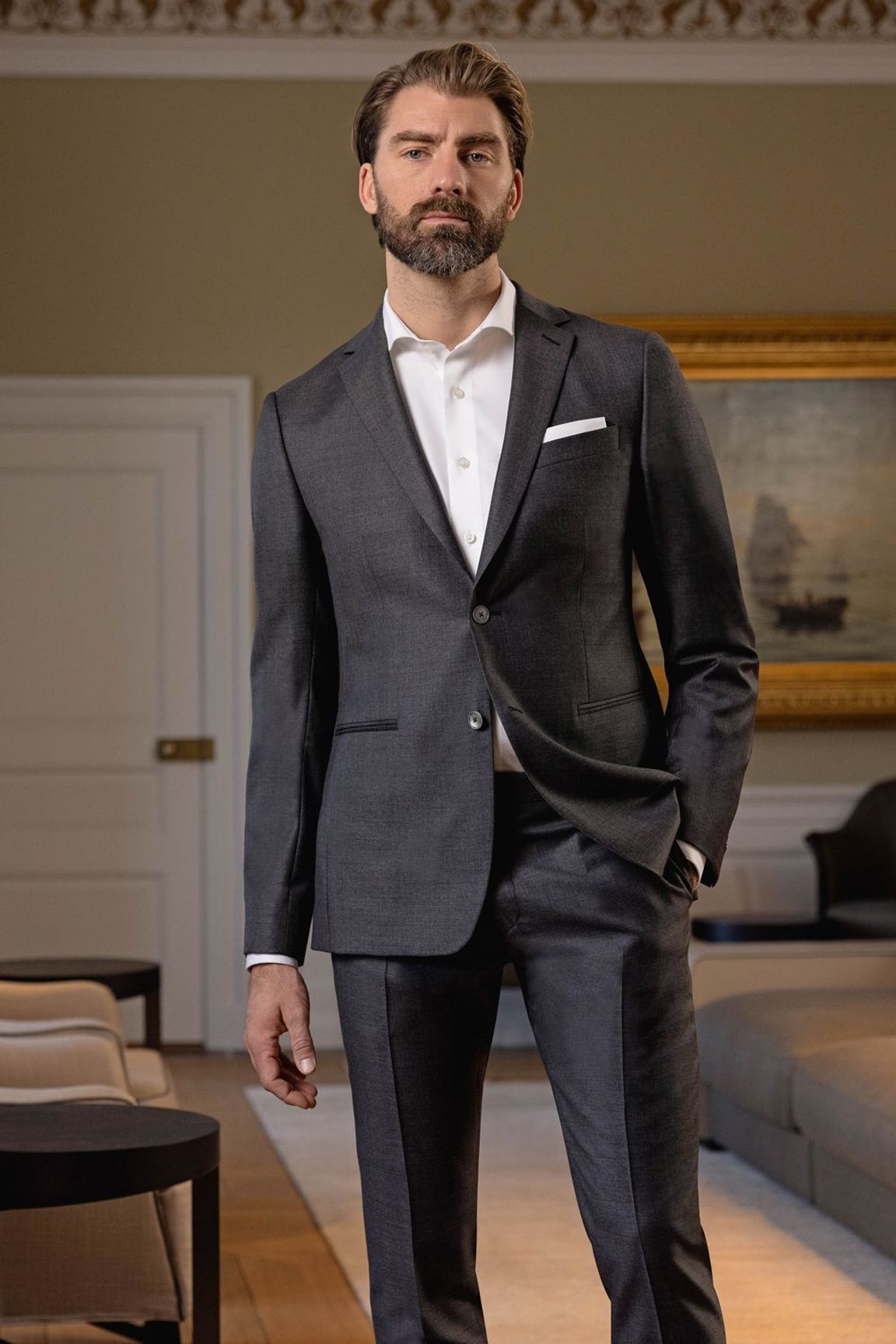Understanding the Tailoring Process: From Fabric Option to Final Fitting for the Perfect Wardrobe
The tailoring process is a complicated interplay of art and scientific research, beginning with the essential decision of textile option and culminating in the accurate modifications of last fittings. Each material type brings one-of-a-kind qualities that influence not just the visual appeal but likewise the garment's durability and viability for various occasions.
Relevance of Material Option
Selecting the ideal material is critical in the customizing procedure, as it straight affects the convenience, durability, and overall visual of the last garment. The selection of material sets the structure for the garment's efficiency, performance, and design. Various materials possess unique properties, such as breathability, stretch, and weight, which can substantially influence just how the garment drapes and fits the body.

A tailored piece made from an ideal fabric not only showcases craftsmanship yet also raises the user's self-confidence. Consequently, understanding the subtleties of fabric option is extremely important for any kind of customizing undertaking. It makes sure that the final item not only fulfills the aesthetic needs of the customer however also aligns with practical demands, thus achieving an unified equilibrium in between type and function in the tailored wardrobe.
Kinds Of Fabrics and Their Usages
Recognizing the numerous types of materials available is vital for making notified decisions during the customizing process. Each fabric possesses distinct qualities that dictate its suitability for particular garments and occasions.
Its convenience enables it to be customized into every little thing from t-shirts to outfits. Its natural flexibility helps garments preserve form over time.
Silk radiates deluxe and is lightweight, making it perfect for eveningwear and fragile shirts; however, it calls for mindful handling because of its fragility. Bed linen, with its textured finish, is a preferred option for warm environments, offering a crisp and ventilated feeling, but it wrinkles quickly, which might impact the garment's look.
Artificial fabrics, such as polyester and nylon, deal sturdiness and resistance to wrinkles, making them ideal for daily wear and energetic apparel. Understanding these material kinds and their residential or commercial properties permits much better decision-making, ensuring that each customized piece not just fits well but likewise aligns with the designated purpose and event.
The Tailoring Methods Clarified
The art of customizing counts on a range of strategies that transform textile into well-fitted garments. Central to this procedure is pattern composing, where a tailor develops design templates based upon the client's dimensions and desired my site style. This first step makes sure that the garment will certainly fit the wearer appropriately prior to any type of reducing occurs.
As soon as patterns are developed, cutting strategies enter play. Accuracy is critical as mistakes can bring about misfitting garments. Tailors typically make use of various cutting techniques, such as single-layer reducing for intricate styles and multiple-layer reducing for performance on basic patterns.
Basting is one more crucial technique, enabling dressmakers to momentarily sew fabric assemble for an initial installation (wedding suits perth). This approach uses the opportunity to evaluate the drape and general silhouette before last sewing
Seaming strategies, consisting of flat-felled joints and French seams, improve the garment's longevity you can check here and visual appeal. Tailors also employ techniques such as interfacing and padding to offer structure and shape to particular areas, like collars and shoulders.
Lastly, finishing strategies, including hemming and edge finishing, guarantee the garment's longevity while offering a polished look. Together, these methods form the foundation of effective customizing, causing charming, custom-fit apparel.

Suitable Adjustments and Factors To Consider
After the initial tailoring methods have been applied and the garment is created, fitting changes end up being extremely important to accomplishing the excellent fit. These adjustments address various aspects of the garment, ensuring it contours to the wearer's physique and improves total appearance.

The surge of trousers is one more critical aspect; it ought to sit comfortably over the hips without creating discomfort, link enabling ease of movement. Hemming sizes for both trousers and skirts should show the user's recommended style while appreciating percentages.
Additionally, focus should be offered to the rear of the garment, guaranteeing that there are no unattractive pulls or excess textile - top tailor perth. Each adjustment needs to be meticulously considered, as even minor modifications can substantially influence the total fit and aesthetic of the tailored item, ultimately bring about a wardrobe that exudes confidence and elegance
Preserving Your Tailored Clothing
Always follow the care tag guidelines, which might recommend completely dry cleansing for delicate materials or machine washing for even more sturdy materials. Prevent constant laundering, as this can wear down the textile and modify the garment's shape.
Storage is just as crucial; use padded wall mounts for jackets and coats to preserve shoulder framework, and shop trousers folded neatly or hung to protect against creasing. Protect garments from direct sunshine, which can fade colors and damages fibers.
In addition, routine assessments for minor repair services can avoid larger issues. Inspect for loosened switches, fraying seams, or indicators of moth damage, addressing these troubles quickly to keep the garment's integrity.
Last but not least, consider seasonal rotation. Putting on tailored pieces in small amounts permits fabrics to recoup, prolonging their life expectancy. By executing these maintenance strategies, you can make certain that your tailored garments stay as immaculate as the day you first wore them, improving your excellent wardrobe for years to find.
Verdict
The tailoring procedure, encompassing textile selection, competent strategies, and accurate suitable changes, plays a vital function in developing garments that enhance both convenience and design. Understanding the significance of maintenance extends the life of customized garments, strengthening their worth in a well-curated wardrobe.